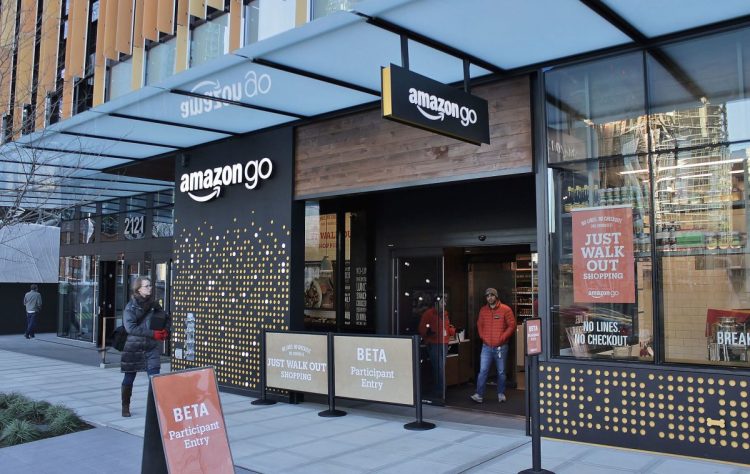Watch all the Transform 2020 sessions on-demand here.
As the rest of us wait in checkout lines while stocking up on groceries for the week, folks in Seattle are eagerly gearing up for the launch of the first store to eliminate cashiers. The much-anticipated Amazon Go grocery store will open its doors to the public on Monday, having weathered challenges that delayed its launch by almost a year. After working through the kinks and successfully testing the store’s AI-driven technology with reviewers and employees, it seems Amazon is finally ready to open its automated storefront to the masses.
How does it work?
Before entering the Amazon Go store, a shopper must download the free Amazon app and link it to their Amazon shopping account. The app launched today and is available for iPhone and Android. Once a shopper has the app, they can use their mobile device to check in using a QR code at the storefront before entering the sales floor. Checking in using the app allows the store’s AI to track the items a shopper picks up. When their shopping is complete, a customer can simply walk out of the store, and the total value of their purchases will be charged to their Amazon account.
Although the company has kept the inner workings of the sophisticated AI software under wraps, Amazon Go’s vice president of technology, Dilip Kumar, provided Fast Company with a general explanation of how it works. Kumar said, “You use machine learning and use computer vision in a way that makes this experience completely seamless. We have spent a lot of time figuring out how to make our algorithms and our sensors reliable, highly available, and very efficient so that you get things right and we’re very accurate.”
Despite Amazon’s attempts to veil the presence of the store’s consumer-tracking AI, those who participated in the testing and reviewing processes say the ceiling full of black cameras offers a not-so-subtle reminder of the technology running behind the scenes.
June 5th: The AI Audit in NYC
Join us next week in NYC to engage with top executive leaders, delving into strategies for auditing AI models to ensure fairness, optimal performance, and ethical compliance across diverse organizations. Secure your attendance for this exclusive invite-only event.
What can you buy?
The goal of Amazon Go is to provide fast, fresh, and affordable food for busy shoppers. The company hopes to help consumers move away from processed and frozen goods when they’re in a time crunch. This is why the current selection of items for purchase is limited relative to what you’d find in a standard grocery store. For example, you’ll find staples like bread and milk in Amazon’s storefront, but not a full bakery or dairy aisle.
Convenience lies at the core of Amazon Go, but not in the form you’d expect from a gas station or a corner store. Go shoppers can browse a variety of ready-made meals and Amazon Meal Kits to take home everything they need to enjoy quality, chef-prepped food in 30 minutes or less.
What’s next?
The launch of the first Go store represents the beginning of Amazon’s first round of consumer testing. As of now, the retailer has no plans to expand the technology into Whole Foods stores. In an interview with Reuters, Amazon VP Gianna Puerini said “We’d love to open more,” but Amazon has yet to announce additional locations.
It seems fitting that the Seattle-based company would launch its first automated grocery store in its hometown. The question now is: Which city will be next to move into the future of automated grocery shopping?


